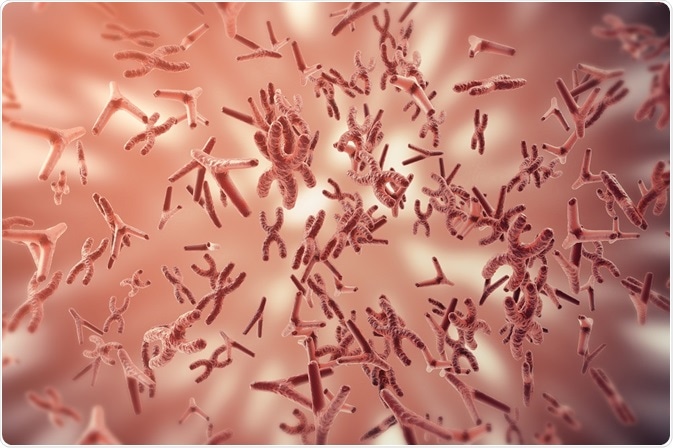RNA interference (RNAi) is a post-transcriptional gene regulatory system that makes use of non-coding RNA molecules called microRNAs in cells.
 Credit: Rost9/Shutterstock.com
Credit: Rost9/Shutterstock.com
The short RNA sections are taken up by the RNA induced silencing complex (RISC) which then targets specific messenger RNAs (mRNAs) for degradation. This suppresses expression of the gene corresponding to the mRNA.
RNAi has been harnessed in the field of biotechnology for gene silencing, gene knockout, and gene knockdown. The most commonly used tools for gene silencing are small interfering RNA (siRNA), short hairpin RNA (shRNA), and microRNA mimics and inhibitors.
RNAi has gained tremendous popularity with applications across all areas of life sciences. This article gives an overview of a few recent studies in the field.
Gene therapy development for epilepsy
Researchers developed a gene silencing approach for knockdown of adenosine kinase (ADK) in Wharton’s jelly mesenchymal stem cells (a type of human cell). They targeted ADK mRNA at the 3’ end with eight coding cassettes containing anti-adenosine kinase shRNAs.
The cassettes were first cloned into a lentiviral vector, then the vectors were screened to find those that expressed the most efficient anti-ADK miR-shRNA. That vector was used to stably transduce the cells. The result was 95% down-regulation of ADK mediated by RNAi.
This study demonstrated efficient usage of a shRNA cassette for ADK knockdown. The method may produce cells that could be used for developing a gene therapy for epilepsy.
Gene silencing for cancer therapy
Kidney injury molecule 1 (Kim-1) is a biomarker for proximal tubule injury of the kidney and thought to be a target for renal cancer. Xu et al. investigated the effects of Kim-1 knockdown on 786-0 cells through lentivirus-mediated RNAi.
Kim-1 inhibited the proliferation and colony formation ability of the cells, with arrest in the G0/G1 phase. Early and late apoptosis increased in the cells treated with siRNA.
They also tested the Kim-1 gene silencing construct in mice, and found inhibition of growth, concluding that Kim-1 inhibits growth of 786-0 cells in vitro and in vivo and is a potential target for clear cell renal carcinoma therapy.
Library screening
RNAi has shown great utility in the study of individual screens, but the technology has also been expanded to high throughput library screens in which hundreds or thousands of genes, or even whole genomes, can be screened for significance using an RNAi approach.
In one example, a cardiac-targeted gene silencing method is developed in Drosophila to study the effects of heart structure and function for 134 candidate disease genes. The human candidate genes have homologs in fruit flies, making Drosophila a suitable model organism.
The RNAi constructs were inserted into the flies and flies assessed for phenotype. The experiment employed a quantitative phenotypic screening protocol that looked at several parameters of heart health: lethality, heart structure, and adult longevity.
The researchers found that 52% of the candidate genes were required for cardiac development and function in flies. The study demonstrated that Drosophila is a valuable model system for functional screening and validation of candidate disease genes identified through large-scale sequencing.
Further Reading